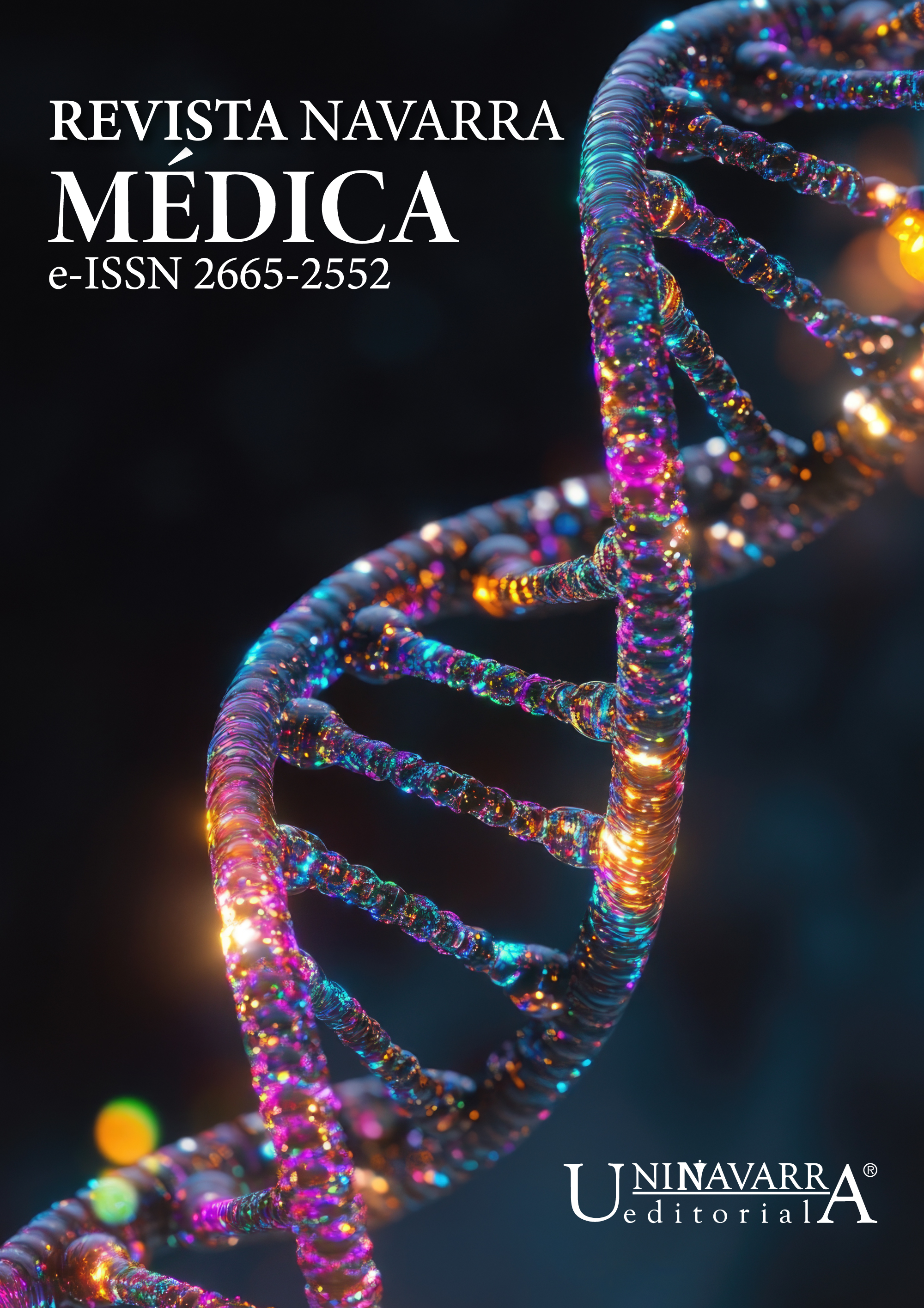DIAGNOSTIC TOOLS FOR DRUG-INDUCED LIVER INJURY IN ACUTE LIVER FAILURE: A SYSTEMATIC REVIEW AND META-ANALYSIS
DOI:
https://doi.org/10.61182/rnavmed.v11n2a5Keywords:
DILI, Acute liver failure, RUCAM score, DILIN score, NMPA scoreAbstract
Objective: To assess the accuracy and validity of diagnostic tools for DILI in patients with acute liver failure, comparing their sensitivity, specificity, and clinical utility.
Methods: A systematic review and meta-analysis were conducted on observational studies involving adults with acute liver failure. Three studies (563 patients) were included, analyzing the performance of the RUCAM, DILIN, and NMPA scoring systems. The main outcomes were the sensitivity, specificity, and predictive values of these tools.
Results: The DILIN system exhibited the highest sensitivity (95.1%) but a low specificity (23.9%), while NMPA excelled in specificity (99.2%) and showed a positive predictive value of 90.7%. RUCAM demonstrated an intermediate balance with a sensitivity of 90.5% and a specificity of 56%. The most common symptoms of DILI included jaundice (66%), nausea (63%), and abdominal pain (49%).
Conclusion: DILIN is effective for the early detection of DILI, though its low specificity may result in false positives. NMPA is more suitable for confirming diagnoses due to its high specificity. Integrating these tools with the development of specific biomarkers and combined diagnostic algorithms could enhance diagnostic accuracy and optimize the management of DILI in acute liver failure.
References
1 Stravitz RT, Lee WM. Acute liver failure. Lancet. 2019;394(10201):869–81. doi: https://doi.org/10.1016/S0140-6736(19)31894-X
2 Chalasani N, Younossi Z, Lavine JE, Diehl AM, Brunt EM, Cusi K, et al. The diagnosis and management of non-alcoholic fatty liver disease: Practice Guideline by the American Association for the Study of Liver Diseases, American College of Gastroenterology, and the American Gastroenterological Association. Hepatology. 2012;55(6):2005–23. doi: https://doi.org/10.1002/hep.25762
3 Fernández J, Bassegoda O, Toapanta D, Bernal W. Acute liver failure: A practical update. JHEP Rep. 2024;6(9):101131. doi: https://doi.org/10.1016/j.jhepr.2024.101131
4 Larson AM, Polson J, Fontana RJ, Davern TJ, Lalani E, Hynan LS, et al. Acetaminophen‐induced acute liver failure: results of a United States multicenter, prospective study. Hepatology. 2005;42(6):1364–72. doi: https://doi.org/10.1002/hep.20948
5 Hoofnagle JH, Björnsson ES. Drug-Induced Liver Injury — Types and Phenotypes. N Engl J Med. 2019;381:264–73. doi: https://doi.org/10.1056/NEJMra1816149
6 Shahbaz O, Mahajan S, Lewis JH. Highlights of drug - and herb- induced liver injury in the literature from 2016: how best to translate new information into clinical practice? Expert Opin Drug Metab Toxicol. 2017;13(9):935–51. https://doi.org/10.1080/17425255.2017.1362391
7 Vujkovic M, Ramdas S, Lorenz KM, Guo X, Darlay R, Cordell HJ, et al. A multiancestry genome-wide association study of unexplained chronic ALT elevation as a proxy for nonalcoholic fatty liver disease with histological and radiological validation. Nat Genet. 2022;54(6):761–71. doi: https://doi.org/10.1038/s41588-022-01078-z
8 Puri P, Lee WM, Fontana RJ, Kim NK, Durkalski V, McGuire BM, et al. Alcohol consumption is associated with the severity and outcome of acute liver injury/failure. Liver Int. 2020;40(2):360–7. doi: https://doi.org/10.1111/liv.14327
9 Higgins JP, Green S, editors. Cochrane Handbook for Systematic Reviews of Interventions. Chichester (UK):Wiley; 2008. disponible en: https://doi.org/10.1002/9780470712184
10 Grillo‐Ardila CF, Paez‐Castellanos E, Bolaños‐Palacios JC, Bautista‐Charry AA. Spatulas for operative vaginal birth: A systematic review and meta‐analysis. Int J Gynecol Obstet. 2022;156(2):197–205. doi: https://doi.org/10.1002/ijgo.13681
11 Schünemann HJ, Tugwell P, Reeves BC, Akl EA, Santesso N, Spencer FA, et al. Non‐randomized studies as a source of complementary, sequential or replacement evidence for randomized controlled trials in systematic reviews on the effects of interventions. Res Synth Methods. 2013;4(1):49–62. doi: https://doi.org/10.1002/jrsm.1078
12 Moher D, Liberati A, Tetzlaff J, Altman DG. Preferred reporting items for systematic reviews and meta-analyses: The PRISMA Statement. PLoS Med. 2009;6(7):e1000097. doi: https://doi.org/10.1371/journal.pmed.1000097
13 Ciapponi A. QUADAS-2: instrumento para la evaluación de la calidad de estudios de precisión diagnóstica. Evid. Act. Pract. Ambul. 2015;18(1):22-30. doi: https://doi.org/10.51987/evidencia.v18i1.6341
14 Benichou C, Danan G, Flahault A. Causality assessment of adverse reactions to drugs—II. An original model for validation of drug causality assessment methods: Case reports with positive rechallenge. J Clin Epidemiol. 1993;46(11):1331–6. doi: https://doi.org/10.1016/0895-4356(93)90102-7
15 Rockey DC, Seeff LB, Rochon J, Freston J, Chalasani N, Bonacini M, et al. Causality assessment in drug-Induced liver injury using a structured expert opinion process: comparison to the Roussel-Uclaf causality assessment method. Hepatology. 2010;51(6):2117–26. doi: https://doi.org/10.1002/hep.23577
16 Yang H, Guo D, Xu Y, Zhu M, Yao C, Chen C, et al. Comparison of different liver test thresholds for drug-induced liver injury: updated RUCAM versus other methods. Front Pharmacol. 2019;10:816. doi: https://doi.org/10.3389/fphar.2019.00816
17 Ciapponi A. QUADAS-2 : instrumento para la evaluación de la calidad de estudios de precisión diagnóstica. Evid Act Pract Ambul. 2015;18(1):22-6. DOI: https://doi.org/10.51987/evidencia.v18i1.6341
18 Ardila-Suárez OM, Oriz-Benjumea L, Arteta AA, Guevara-Casallas LG. Daño hepático inducido por medicamentos: relación entre el índice R y la histopatología. Rev Gastroenterol Mex. 2023;88(1):19–27. do: https://doi.org/10.1016/j.rgmx.2021.03.008
19 Garcia-Cortes M, Robles-Diaz M, Stephens C, Ortega-Alonso A, Lucena MI, Andrade RJ. Drug induced liver injury: an update. Arch Toxicol. 2020;94(10):3381–3407. doi: https://doi.org/10.1007/s00204-020-02885-1
20 Tillmann HL, Suzuki A, Barnhart HX, Serrano J, Rockey DC. Tools for causality assessment in drug-induced liver disease. Curr Opin Gastroenterol. 2019;35(3):183–90. doi: https://doi.org/10.1097/MOG.0000000000000526
21 Björnsson HK, Björnsson ES. Drug-induced liver injury: Pathogenesis, epidemiology, clinical features, and practical management. Eur J Intern Med. 2022;97:26–31. doi: https://doi.org/10.1016/j.ejim.2021.10.035
22 Hosack T, Damry D, Biswas S. Drug-induced liver injury: a comprehensive review. Therap Adv Gastroenterol. 2023;16:17562848231163410. doi: https://doi.org/10.1177/17562848231163410
23 Lasagna A, Sacchi P. The ABC of Immune-mediated hepatitis during immunotherapy in patients with cancer: from pathogenesis to multidisciplinary management. cancers (Basel). 2024;16(4):795. doi: https://doi.org/10.3390/cancers16040795
24 Leise MD, Poterucha JJ, Talwalkar JA. Drug-induced liver injury. Mayo Clin Proc. 2014;89(1):95–106. doi: https://doi.org/10.1016/j.mayocp.2013.09.016
25 García‐Cortés M, Matilla‐Cabello G, Lucena MI. Methods for causality assessment of idiosyncratic drug‐induced liver injury. Liver Int. 2025;45(3):e16083. doi: https://doi.org/10.1111/liv.16083
Downloads
Published
Issue
Section
License
Copyright (c) 2025 Carlos Hernán Calderón-Franco, Óscar Iván Cujiño-Ibarra, Arlen Mauricio Marquez-Galindo, Natalia Fernanda Calderón-Lopez, Diego Mauricio Aponte-Martín

This work is licensed under a Creative Commons Attribution-NonCommercial 4.0 International License.








